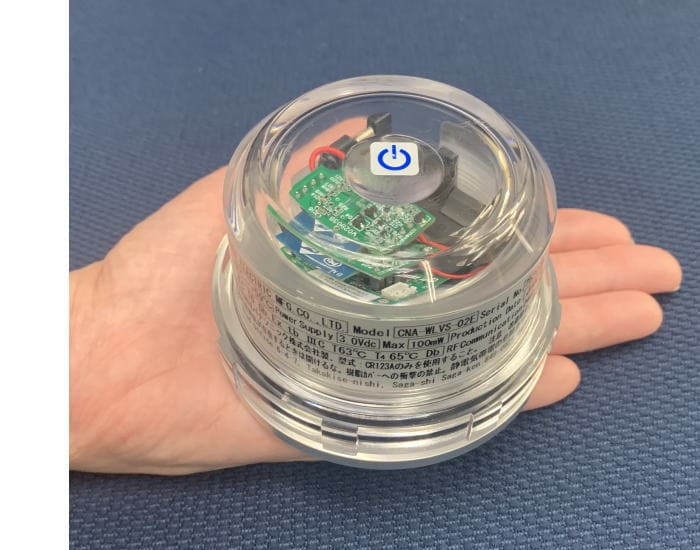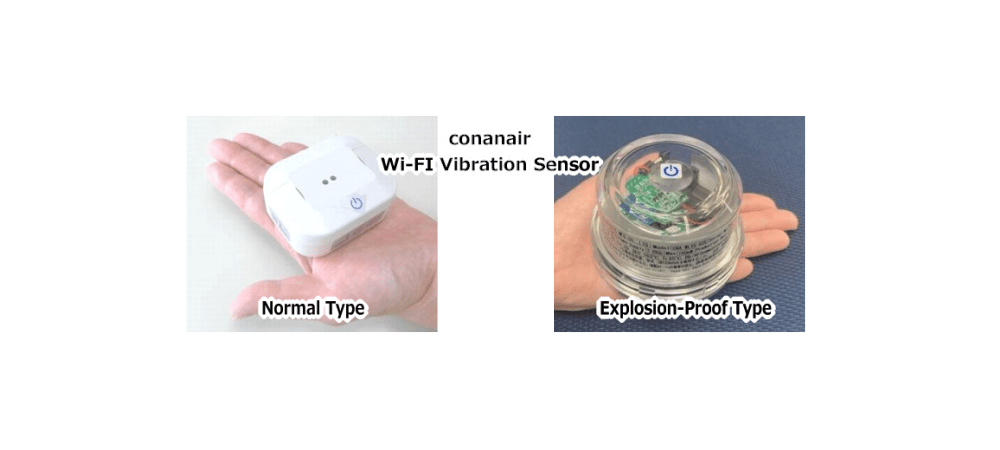Key Price Comparison Points and Smart Selection Methods to Know Before Purchasing a Vibration Meter
Vibration meter prices vary significantly based on features and performance. Here, we introduce key price comparison points for vibration sensors that will benefit you, including price benchmarks and selection criteria to consider before making a purchase, as well as tips for making an informed choice.
Monitoring the health of monitoring equipment is crucial for maintaining stable factory operations and achieving improved productivity. Vibration sensors play a central role in this. They detect subtle changes in machine vibration, enabling predictive maintenance. Recent advancements in wireless technology have made implementing vibration sensors easier and more efficient.
However, vibration meter prices vary significantly based on product features and performance, making comparison and evaluation crucial.
Here, we introduce key price comparison points for vibration sensors that will benefit you, including price benchmarks and selection criteria to consider before making a purchase, as well as tips for creating an informed choice.
Key Price Comparison Points for Vibration Sensors That Will Benefit You


Vibration meter prices vary greatly depending on their features, performance, and manufacturer. To select a cost-effective product, it is essential to compare and evaluate from multiple perspectives.
How Measurement Capabilities Affect Vibration Meter Pricing
The price of the vibration meter itself fluctuates based on the range of measurement capabilities the product offers.
First, the higher the measurable frequency range (from high to low frequencies), the greater the sensitivity, and the higher the data resolution, the more detailed vibrations it can capture. The higher the price tends to be. For example, detecting minute abnormalities in high-speed, precision machinery that rotates requires a vibration meter capable of measuring up to the high-frequency band. These meters demand more advanced technology and thus carry a higher price tag.
Conversely, for routine monitoring of general-purpose machinery, a less sophisticated vibration meter may suffice.
The Presence and Type of Wireless Functionality Affects Price
Next, the presence and type of wireless functionality significantly impact the price of a vibration meter. Wired vibration sensors are relatively inexpensive, but wireless models offer greater installation flexibility, eliminate the hassle of wiring work, and improve measurement efficiency, making them generally more expensive.
Wireless methods include Wi-Fi, Bluetooth, and others, each with distinct characteristics regarding communication range, data transfer speed, and power consumption. Therefore, the chosen method also affects the price.
Compactness and durability of the unit also affect the price
The compactness and durability of the vibration meter itself are also important factors that influence the price. Small, lightweight vibration sensors are advantageous when installation in confined spaces is required or when easy attachment and removal to multiple pieces of equipment is desired. However, the costs associated with their design and manufacturing are typically reflected in the price.
Furthermore, products featuring robust designs—such as dustproof, waterproof, and shock-resistant capabilities—to withstand harsh factory environments (high temperatures, humidity, dust, oil, etc.) are priced to match their high durability and reliability. Since these factors directly impact the usability and lifespan of the vibration meter, it is crucial to compare options considering not only price but also operational benefits.
Price Benchmarks and Optimal Selection Before Purchase


Purchasing a vibration meter is an investment in future equipment maintenance. To maximize cost-effectiveness, it is crucial to understand pricing benchmarks and make informed choices.
Balancing “Required Functionality and Price” Evaluation Criteria
The primary criterion for purchasing a vibration meter is whether the functionality your company needs is commensurate with the price. If the goal is routine monitoring and early detection, top-tier features may not be necessary.
What matters is evaluating the price of products that offer sufficient accuracy for basic diagnostics.
This enables the acquisition of necessary data at an affordable price, leading to a cost-effective choice. It is wise to avoid over-spec and select based on your company's maintenance level and the price that offers “sufficiently necessary functions.”
Comprehensive Evaluation Criteria: “Initial Cost and Operating Cost”
When evaluating vibration meter prices, it is essential to comprehensively assess not only the unit cost but also the total initial implementation cost and long-term operating costs (running costs). Initial costs include the device itself, software, installation fees, and other related expenses. Wireless vibration sensors offer the advantage of eliminating wiring, thereby reducing initial costs.
Additionally, operational costs include maintenance/support fees, communication expenses, and other related expenses. Even if initial costs are low, running costs can sometimes be high. Therefore, it is crucial to grasp these costs holistically and simulate cost-effectiveness over several years.
Long-Term Value Criteria: Usability and Support Structure
Beyond price and features, post-implementation usability and support structure are critical criteria. Whether field personnel can operate the system intuitively and whether it allows easy access from standard mobile devices significantly impacts system adoption. A complex operation can increase learning costs and operational burdens.
Furthermore, the vendor's support structure is a crucial factor to consider when making a thorough purchasing decision. The availability of prompt and accurate support has a direct impact on the system's stable operation. While these factors may not be directly reflected in the price, they are crucial criteria that determine the system's utility and cost-effectiveness.
Smart Vibration Meter Selection: Navigating Price Fluctuations


The vibration meter market is constantly evolving. By adopting an innovative selection approach, you can minimize initial investment while maximizing effectiveness. Understand price fluctuations and make informed investment decisions for your company.
Understanding Market Price Fluctuation Factors
The vibration meter market prices fluctuate constantly due to multiple factors, including technological innovation, competitor activity, raw material costs, and the balance of market supply and demand. For example, when new wireless technology becomes widespread and sensor manufacturing costs decrease, prices for products with equivalent functionality tend to fall.
Conversely, demand for specific features or performance levels can cause temporary price increases.
An innovative approach involves regularly gathering information on these overall market price trends and technological advancements. Objectively evaluate whether the features and performance offered by a product justify its current market price. By avoiding fixation on a single product price and instead taking a bird's-eye view of the overall market movement, you can avoid unnecessary expenses and make informed decisions to introduce products at appropriate prices.
Determining the Optimal Introduction Timing
When introducing vibration sensors, discerning price fluctuations is also crucial for determining the optimal timing for introduction. Technology is constantly evolving, and waiting longer may allow you to acquire higher-performance products at lower prices. However, on the other hand, prolonging the period during which equipment failure risks are left unaddressed could lead to increased production losses and emergency repair costs.
The wise choice lies in balancing the “opportunity cost of waiting” against the “early benefits gained through upfront investment.” A strategic approach is needed: consider the urgency of your equipment's needs and the severity of challenges within your existing maintenance system. Then, weigh market price fluctuations against your company's specific requirements to decide whether to wait for technological advances or prioritize the benefits achievable through early adoption.
Seeking an affordable and user-friendly vibration meter? Contact NSXe!


NSXe offers the Wi-Fi vibration sensor “conanair.” While equipped with performance for simple diagnostics, its low price of approximately ¥30,000 enables condition monitoring via vibration data, significantly lowering the barrier to entry for predictive maintenance. Its patented under-sampling technology, defying conventional wisdom, enables precise diagnostics for detecting bearing damage. This palm-sized smart sensor is highly portable and easily installed with magnets, eliminating the need for electrical wiring. No dedicated app is required; measurements are easily performed via browser operation. By configuring it on an independent Wi-Fi access point or within your company's LAN Wi-Fi environment, automatic data collection to a PC is also achievable.
Furthermore, its IP67 waterproof design and battery operation ensure maintenance-free use. Beyond mobile measurements via smartphones or tablets, its automatic measurement mode allows for continuous, unattended monitoring when permanently installed.


An explosion-proof model is also available, which received the Excellence Award at the 36th Small and Medium Enterprise Excellent New Technology and New Product Awards. This model is suitable for hazardous locations such as chemical plants and oil refineries.
For more information about the product, please don't hesitate to contact us.
Try conanair for FREE now !

Please contact NSXe for any issues regarding facility maintenance
| Company Name | NSXe Co.Ltd - Nakayama Hydrothermal Industry Co., Ltd. |
|---|---|
| Head Office | 7686-10 Hirano-cho, Suzuka, Mie513-0835, Japan zip code 513-0835 |
| Phone | +81-90-2189-1398 |
| FAX | +81-59-379-4704 |
| Business Hours | 8:00~17:00 |
| Office Regular
Holiday |
Saturday afternoons, Sundays and public holidays |
| URL | https://conanair.com/ |
Please contact NSXe for any issues regarding facility maintenance
| Company Name | NSXe Co.Ltd - Nakayama Hydrothermal Industry Co., Ltd. |
|---|---|
| Head Office | 7686-10 Hirano-cho, Suzuka, Mie513-0835, Japan zip code 513-0835 |
| TEL | +81-90-2189-1398 |
| FAX | +81-59-379-4704 |
| Business Hours | 8:00~17:00 |
| Office Regular
Holiday |
Saturday afternoons, Sundays and public holidays |
| URL | https://conanair.com/ |











